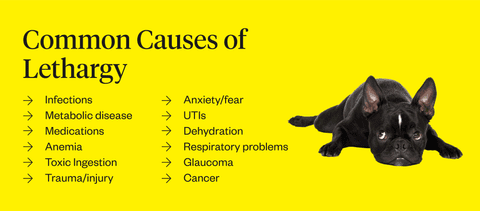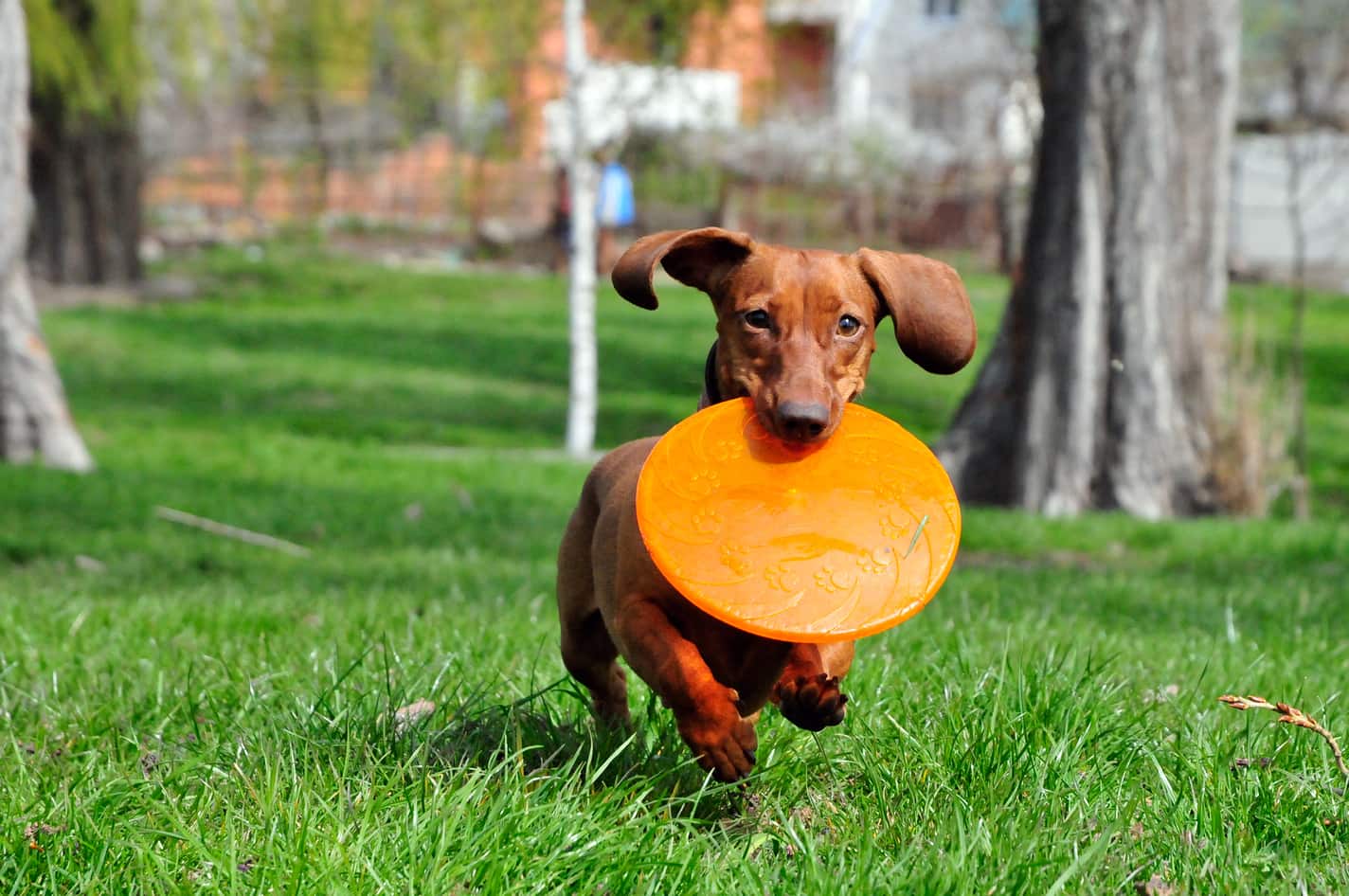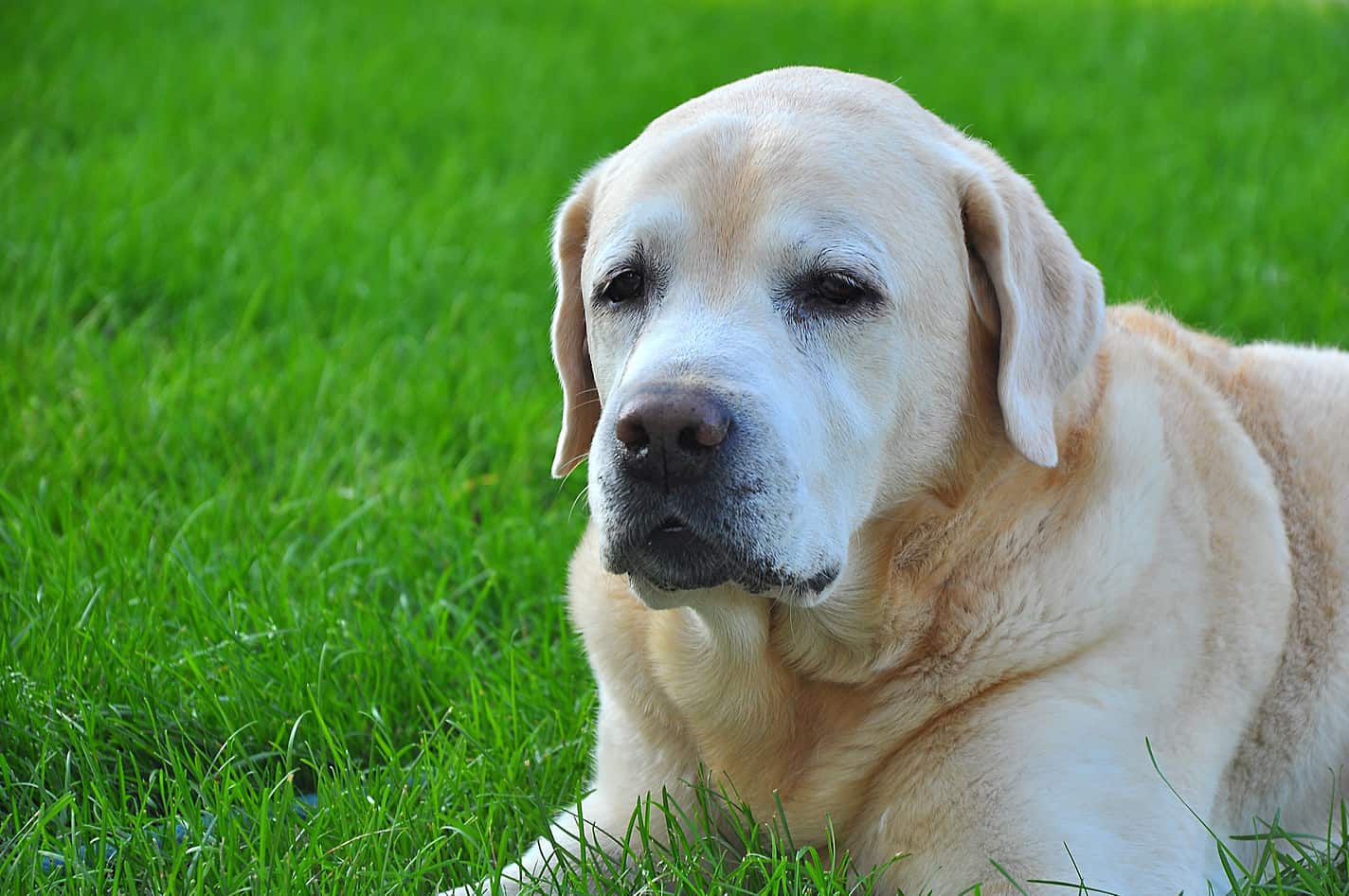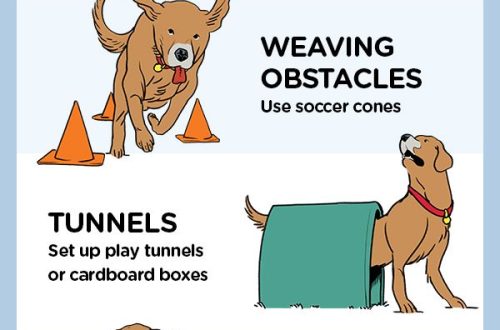
What to do if the dog is lethargic
If the dog has become lethargic and sad, looks tired or refuses to play with the same enthusiasm, most likely it is not that she is just lazy. The cause of lethargy or exercise intolerance in pets can be serious health problems. These symptoms may indicate serious pathologies, such as heart disease. If the dog is sad and lethargic, it is important to pay attention to such signals. About the causes of exercise intolerance and possible ways to solve the problem – in this article.
Contents
Possible causes of lethargy
 Some dogs may feel a little lethargic after being active. For example, a dog may sleep more than usual for a day or two after long, vigorous games in the park or a long hike. But long-term fatigue cannot be ignored. Exercise intolerance can be a symptom of a serious disorder, including heart disease, and signal a variety of other problems, from the mildest, such as muscle pain, to serious conditions, such as congestive heart failure. Vets Now lists several possible causes of lethargy in dogs:
Some dogs may feel a little lethargic after being active. For example, a dog may sleep more than usual for a day or two after long, vigorous games in the park or a long hike. But long-term fatigue cannot be ignored. Exercise intolerance can be a symptom of a serious disorder, including heart disease, and signal a variety of other problems, from the mildest, such as muscle pain, to serious conditions, such as congestive heart failure. Vets Now lists several possible causes of lethargy in dogs:
- Infection or disease.
- Heart problems.
- Liver problems.
- Diabetes or hypoglycemia.
- Hypothyroidism.
- Parasites.
- Side effects of drugs.
- poisoning or injury.
Site of service of walking and recommendations to dog owners Wag! adds that refusal to move, combined with other symptoms, including loss of appetite, coughing or fainting, can also be a sign of pulmonary hypertension – high blood pressure in the lungs or other cardiovascular diseases.
Signs of exercise intolerance and lethargy in dogs
Usually a dog’s lethargic behavior is fairly easy to spot. According to Vetinfo, excessive sleep, apathy, lack of interest in games, and lethargy are all clear signs that a dog is lethargic. Exercise intolerance is harder to spot, especially if you don’t walk or play with your dog regularly. In less severe cases, writes Wag!, the dog may simply not want to go for long walks or play much compared to his usual state. Coughing, rapid or difficult breathing after physical activity may indicate exercise intolerance. In extreme cases, the dog may experience confusion, disorientation, disturbed toilet habits, elevated body temperature, severe weakness, and even collapse.
What to do if the dog is lethargic and lies
If the dog behaves lethargically or does not withstand the usual physical exertion, it is important not to force him to run. You need to try to feel the state of the dog and allow her to take a break from games or even interrupt the walk and go home. To identify other serious symptoms, it is necessary to observe the pet. If there are other reasons for the disturbing behavior, you should immediately contact your veterinarian. If the dog has no other symptoms, wait a day or two. If the dog is lethargic, sleepy, its condition does not improve or even worsens, you should consult a veterinarian. In the event of severe acute symptoms such as fainting or collapse, the dog should be immediately taken to an emergency clinic.
Diagnostics
 The veterinarian will conduct a thorough examination of the pet. He will look for signs of lameness, injury or pain, any possible swelling. He will take a blood and urine test to rule out pathologies. It is likely that the dog will also be put on an electrocardiograph to check the electrical activity of the heart and a chest X-ray will be taken to examine the heart and lungs. A specialist may recommend an ultrasound, CT scan, or MRI to diagnose your pet’s condition. Tell your veterinarian about any medications your dog is taking, detail his diet and lifestyle, and mention any other symptoms or recent changes in the animal.
The veterinarian will conduct a thorough examination of the pet. He will look for signs of lameness, injury or pain, any possible swelling. He will take a blood and urine test to rule out pathologies. It is likely that the dog will also be put on an electrocardiograph to check the electrical activity of the heart and a chest X-ray will be taken to examine the heart and lungs. A specialist may recommend an ultrasound, CT scan, or MRI to diagnose your pet’s condition. Tell your veterinarian about any medications your dog is taking, detail his diet and lifestyle, and mention any other symptoms or recent changes in the animal.
What to do after the diagnosis
If the dog is lethargic, does not walk, this is only a symptom of the problem, and not the problem itself. The type of treatment a four-legged friend needs will depend on the diagnosis. After treatment, the dog may recover and return to their previous level of activity. However, heart disease and other progressive conditions may require permanent changes in your pet’s exercise and activity levels for the rest of their lives. You should discuss with your veterinarian your dog’s condition and what kind of physical activity they can safely handle.
Alternatives to vigorous exercise
If a pet is limited in movement and exercise, it can be difficult to manage their weight, and being overweight can exacerbate the condition. Depending on the diagnosis and treatment plan, the dog may need a special dietary diet appropriate to its condition. If the doctor does not do this, you should ask him about a weight control food that will help control body weight without vigorous exercise. It is important to make sure your dog eats food that is appropriate for its age, as this will also help with weight control. Essential nutrients also play an important role. Lack of nutrients needed to maintain a pet’s energy levels can contribute to lethargy.
Age aspects
As dogs age, lethargy begins to increase. Joint pain, weight gain, and simply more fatigue can reduce an animal’s activity. Older dogs are more susceptible to diseases accompanied by lethargy and exercise intolerance. Regardless of the age of the pet, if he has become noticeably more tired, you should not automatically attribute this to his advanced age. Such red flags should never be ignored.
A dog’s activity level can be a significant indicator of its health. That is why owners need to pay close attention to what is the norm for a pet. This will help to recognize any deviations. If the family does not have the habit of regularly playing or walking the dog, it is best to start in order to more accurately know what level of activity is normal for her. By acting promptly at the first sign of lethargy in your four-legged friend, you can help identify a serious illness in the early stages and increase your pet’s chances for many years of healthy and happy life.





